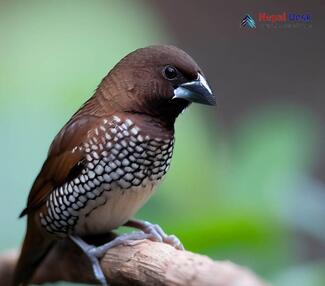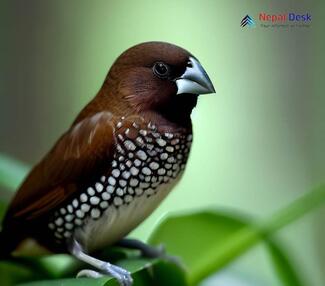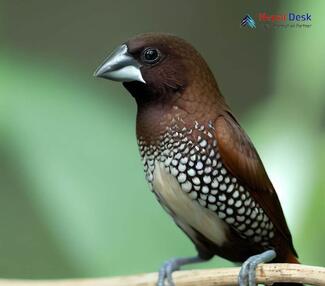The rich biodiversity of Nepal is home to numerous species of birds, and one fascinating avian inhabitant is the Spotted Munia (Lonchura punctulata jankowskii). This small, attractive bird has captured the attention of birdwatchers and wildlife enthusiasts alike. In this article, we will explore all there is to know about Spotted Munia and its presence in Nepal.
Physical Characteristics and Habitat
Spotted Munias are small, compact birds with a distinct appearance. They have a striking white-spotted pattern on their brown plumage, coupled with a conical-shaped, stout beak that helps them feed on seeds—a crucial part of their diet. Adult birds also have a distinguishing scaly look on their breast and flanks.
These charming birds can be found in various habitats, such as grasslands, open fields, forest clearings, and agricultural areas. In Nepal, they are usually sighted in subtropical regions below 1,500 meters in elevation.
Behavior and Breeding
Spotted Munias are gregarious by nature, often forming small flocks of up to 20 birds or more. They can be rather skittish—flying erratically when disturbed. However, if you remain discreet and patient while observing them, you will be rewarded with the sight of these endearing birds hopping around in search of seeds.
The breeding season for Spotted Munias in Nepal begins at the onset of monsoon and extends until late September. Their nests are intricate dome-shaped structures made from grass blades, positioned inconspicuously amid tall vegetation. A single clutch usually contains 4-6 white eggs, which are incubated by both parents for about two weeks.
Conservation Status and Ecotourism
As a species with a vast range across Asia—including India, Bangladesh, Sri Lanka, Myanmar, and Indonesia—Spotted Munias are listed as "Least Concern" on the IUCN Red List of Threatened Species. Nevertheless, it is essential to monitor their population and distribution to ensure their continued presence in the face of habitat loss and climate change.
Birdwatching has become a prevalent ecotourism activity in Nepal, thanks to its diverse avifauna. Spotted Munias are among the many bird species that visitors love to observe on nature walks and guided tours. By participating in such eco-friendly activities, tourists can contribute to the conservation of these birds while also enjoying the beauty of Nepal's astonishing biodiversity.
In Conclusion
The Spotted Munia (Lonchura punctulata jankowskii) is a delightful presence in Nepal's natural landscape. These attractive birds not only capture the imagination of wildlife enthusiasts but also serve as an essential component of the local ecosystem. By raising awareness about Spotted Munia and promoting responsible birdwatching, we can hope for a brighter future for these captivating creatures and Nepal's rich biodiversity.




